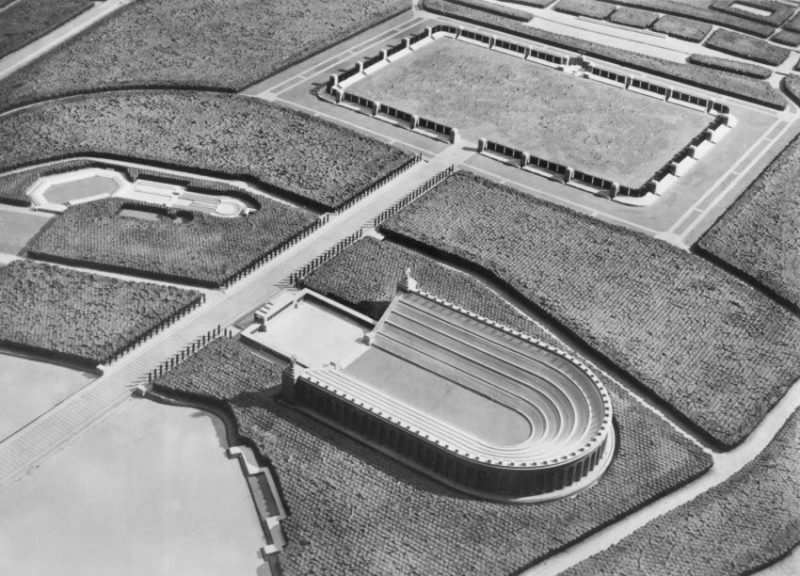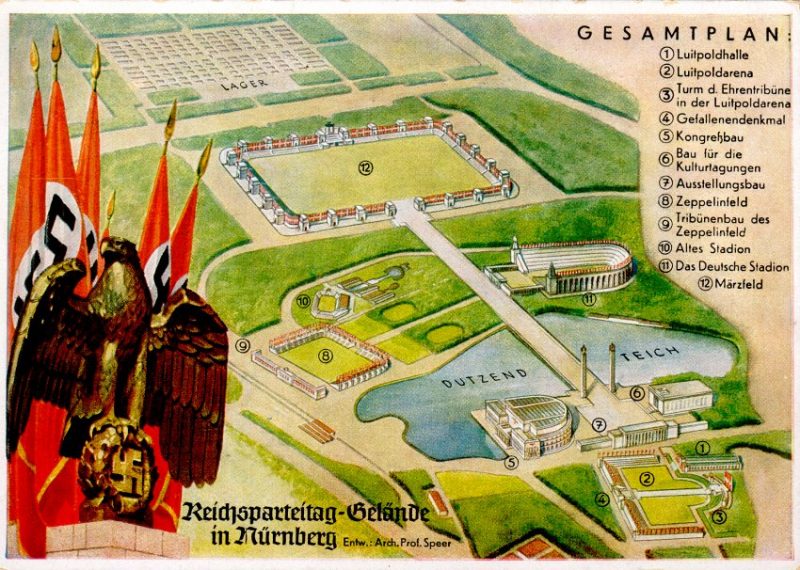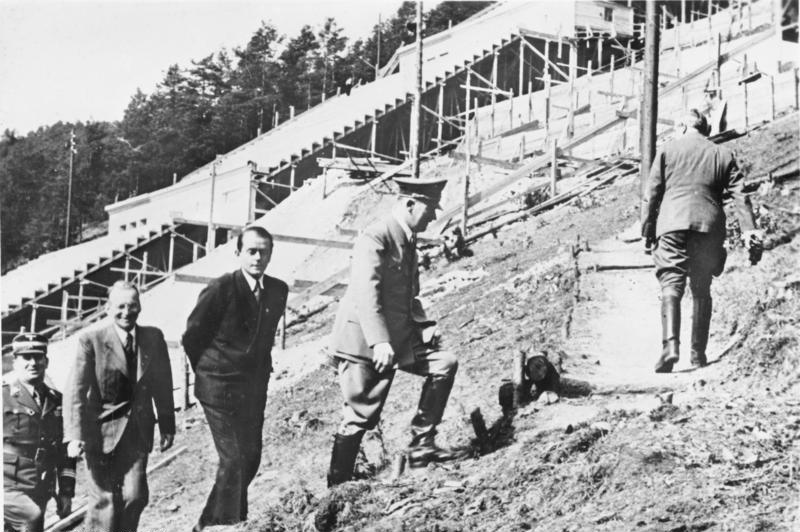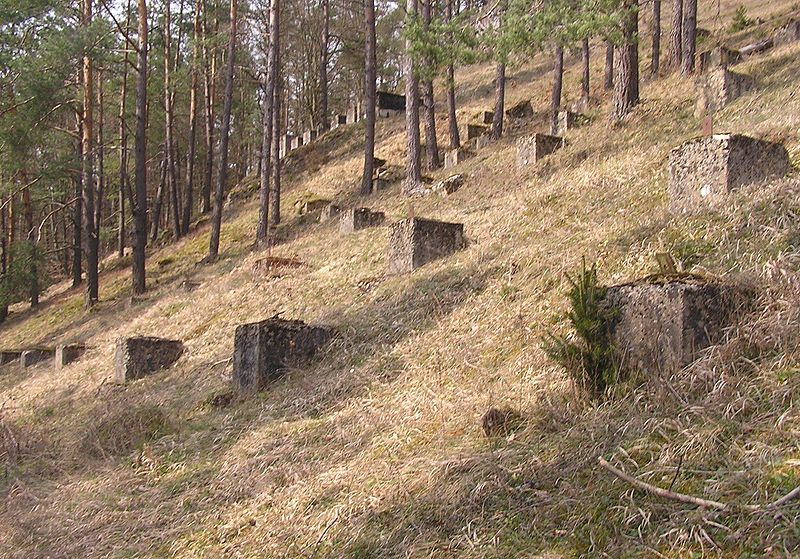One would think that if you’re the most powerful dictator in the world at the time, the last thing you’d want to do is build a stadium. Well, not so with Hitler; he wanted it all.
On September 7, 1937 German construction workers began laying the cornerstones for what Hitler hoped would become the world’s largest stadium. This particular stadium would hold over 400,000 spectators. It was designed by one of Hitler’s closest friends, Albert Speer. Speer was inspired by the Greek Panathenaic Stadium of Athens, as well as by Hitler’s brazen megalomania. However, the stadium never saw its completion because the project was cut short by the demands of World War II and the eventual demise of the Third Reich.
In a groundbreaking ceremony, Hitler unveiled a model of the Deutsches Stadion (German Stadium). The ceremony had brought in a crowd of 24,000 people. He described to the spectators how it would speak words of stone, which were meant to be stronger than anything that could ever be spoken.

Even though it looked like a great idea to benefit the city, Hitler’s architecture was domineering for a reason. This was to make the people in the city feel small, showing them just how much power his regime had over them all. At the same time, however, the Nazi architects wanted a structure to emphasize the sense there was a community. He wanted to create a bond between the competitors and spectators.
In 1937, Wolfgang Lotz wrote an account about Hitler’s project. He had said that the Greek chose the most elite and experienced men to compete against each other. While they are fighting to the death, the entire nation watches in wonder, but feeling sympathetic. In addition to being a sports complex, Hitler had planned on using it as a Nazi party rally grounds in Nuremberg. The idea of the stadium making the spectators feel helpless empowered him.
Despite the uses for it, the complex would have been quite an amazing sight if it had been finished. The finished product would have been in the shape of a horseshoe, equipped with several elevators that could take 100 spectators at a time to the upper levels. At each end of the horseshoe it would be joined by two huge towers that featured gigantic eagles with wingspans of about 50 feet.

When Speer and Hitler were putting the designs together, Speer realized that the playing fields did not match official Olympic dimensions. With that, Hitler responded that it didn’t matter since the 1940 Olympics would be taking place in Tokyo. He then added that after the Tokyo Olympics, sports events would be held in the German complex for “all eternity.” That is why the measurements did not matter – the Germans would set the new rules for the future events to come. One can see just how confident Hitler really was. It also sheds a little light on the fact that Hitler was angling for total world domination. He had also mentioned once before that he would launch his own “Aryan Games.”

Again, Speer was not so confident as Hitler, and was in fact quite concerned, especially about the project’s cost. All Hitler had to say was that the cost was less than “two Bismarck class battleships.” He also added that if a battleship gets destroyed, it will become scrap metal in the years to come. However, the complex would be standing for centuries after it is built. Hitler hoped to see the project completed by 1945, just in time for the Reich Party Congress.
Before the groundbreaking ceremony, Speer and Hitler decided to construct a test stadium in order to get a better idea of the final version’s sight lines and acoustics. They brought in 400 workers to construct a 1:1 model of the stadium. In order to do that, they had to clear an entire hillside of trees near the town of Achtel.
Once the cement was laid, the construction workers erected wooden grandstands across five levels. Even though spectators who sat at the top were 260 feet away, they still would have had a great view, according to Speer.

It took the workers nearly 18 months just to make this model. At the end of the war, Achtel was almost completely destroyed as the Germans fought there against advancing American troops. However, remnants of the test stadium are still intact today. Locals call it the Stadium Mountain. The vegetation that grew on the monument has since been removed and the structure protected, making it a permanent symbol of Nazi hubris.